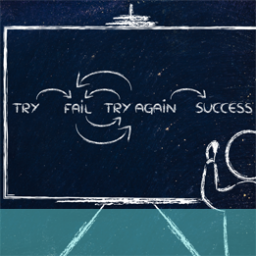
Does Lean UX mean everyone has to design?
One of the key principles of Lean UX is that of team collaboration in the design process. This is often characterised in books and articles on the subject as meaning that anyone can be a designer. While this shouldn’t be totally dismissed as a concept, inevitably it is not quite as straightforward as this and the meaning and practicality of collaboration needs to be explained and understood in order for it to work properly.
There is also the issue of what actually constitutes design. Does it mean the physical act of designing, putting something down on screen or paper? Or is there a more abstract and broader definition that looks around the whole process and contributions from initial ideas and concepts through to critiquing, finessing and adjusting final templates – and everything that falls in between?
The whole approach of Lean UX is that of bringing non-designers and designers together in the design process to draw in expertise from different areas of the organisation in order to get a more informed and rounded product in the final design. Often, by the time a lot of the non-design disciplines see a design for a website a good deal of thought and work has already gone into the process. This tends to produce two things – a certain degree of protection and rigidity from the designers who have already been involved and a reluctance to cast aside what might be a significant amount of expensive work because someone has a different opinion or new perspective.
There are many different categorisations of personality types within business organisations and these will be more or less inclined to the creative side of the process. Without going into too much detail of the various classifications they tend to break down into groups with traits such as leading and managing, teamworking and collaboration, creativity, problem-solving and practical implementation (just doing things). Some of these roles will very much suit integration into the design process – obviously creativity and problem-solving and implementation of ideas will always be critical. However other skills which might not, at first, appear so relevant can also add considerable value to the process.
Knowledge of the overall business proves and the corporate aims and objectives will be very important to the site design if it is to assist in achieving them and departmental managers might be best placed to give this overview. Certain disciplines within the business (such as marketing, sales, production, customer services) could also have a significant stake and say in how the interface works and their perspective can be valuable in determining how customers will react to certain propositions and layouts.
The simple act of having non-designers input into the process and critique initial concepts and designs can give useful insight into how the site might work (or not work) in relation to users and customers. Specialist designers tend to look at projects from a particular point of view, skewed (not surprisingly) towards design principles. But what might fit in best with these precepts is not necessarily what is best for the business or customer. It is important to make sure that other views are brought to the table as soon as possible and this is one of the areas where Lean UX makes a vital contribution.
So can everyone be a designer? Well certainly everyone can (and probably should) have some input into the process but, obviously, the final rendition is best left to the experts.
If you would like more information on Lean UX, your team’s UX capability and how they might be applied to your design processes why not give us ring on +44(0)800 0246 247, or email hello@ux247.com and we can help you understand what value this approach might bring to your website design.






[…] you overcome the fear of design failure. Finally, there’s also a page that discusses how the collaboration between all parties during Lean UX uncovers a broader, more informed and well-rounded set of problems and […]